
María Dolores Dueñas Navarro better known as Lola Dueñas is a Spanish actress. She is the recipient of several accolades, including two Goya Awards for Best Actress. In addition to her contributions to Spanish cinema and television, she has also worked in the French film industry.
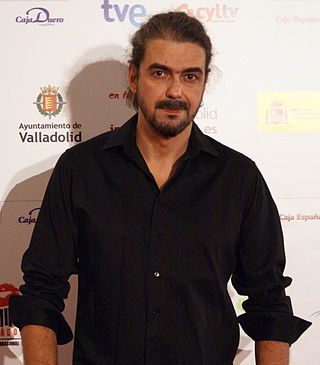
Fernando León de Aranoa is a Spanish screenwriter and film director.

Concepción Velasco Varona, known professionally as Concha Velasco, also Conchita Velasco, was a Spanish actress, singer, dancer, television presenter, and theatrical producer. She received numerous accolades throughout her career in film, theater, and television spanning over six decades, including two National Theater Awards presented by the Spanish Ministry of Culture in 1972 and 2016, the Lifetime Achievement Award presented by the Spanish Television Academy in 2009, and the Honorary Goya Award presented by the Spanish Film Academy in 2012.

Contamina is a municipality located in the province of Zaragoza, Aragón, Spain to the west of the Sierra de Padros, in the upper valley of the river Jalón, a tributary of the Ebro. According to the 2008 census, the municipality has a population of 42 inhabitants. In 1930 the population was 252. The 16th-century parish church is dedicated to St Bartholomew and is constructed in the baroque style. It has a notable 16th-century altar depicting the life of Saint Bartholomew in eight panels.

The Colossus, is known in Spanish as El Coloso and also El Gigante, El Pánico and La Tormenta. It is a painting traditionally attributed to Francisco de Goya that shows a giant in the centre of the canvas walking towards the left hand side of the picture. Mountains obscure his legs up to his thighs and clouds surround his body; the giant appears to be adopting an aggressive posture as he is holding one of his fists up at shoulder height. A dark valley containing a crowd of people and herds of cattle fleeing in all directions occupies the lower third of the painting.

A Pilgrimage to San Isidro is one of the Black Paintings painted by Francisco de Goya between 1819–23 on the interior walls of the house known as Quinta del Sordo that he purchased in 1819. It probably occupied a wall on the first floor of the house, opposite The Great He-Goat.
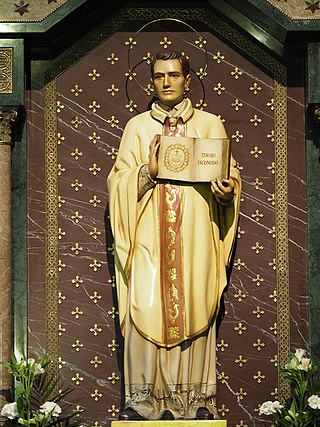
Bernardo Francisco de Hoyos de Seña, SJ, best known simply as Bernardo de Hoyos, was a Spanish Catholic priest, mystic and member of the Society of Jesus. He is best known for his ardent devotion to the Sacred Heart and for his constant promotion of it until his premature death.

Augusto Ferrer-Dalmau Nieto is a Spanish hyperrealist painter who specialises in historical military paintings that portray different eras of the Spanish Armed Forces through hyperrealistic naturalism. On January 11, 2022, he presented the Ferrer-Dalmau Foundation with the aim of promoting defense culture through history and art.

Jean Laurent or, in Spanish, Juan Laurent Minier; sometimes simply J. Laurent was a French photographer who mostly worked in Spain.
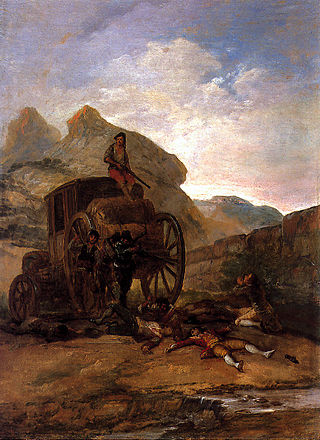
Assault of Thieves is an oil painting made by the Spanish artist Francisco de Goya between 1793 and 1794. It is part of a private collection owned by Juan Abelló.
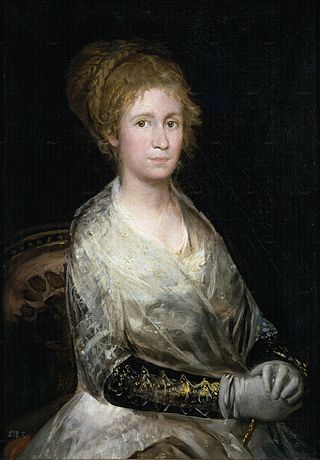
Leocadia Zorrilla, married name Leocadia Weiss, was the old-age companion of Spanish painter Francisco Goya, and mother of the artist Rosario Weiss Zorrilla.
Pablo Fernando Puente Aparicio was a Spanish architect and university professor. He was known, among other professional work, for being the architect of the first nine editions of the famous exhibition "Las Edades del Hombre" and for his teaching work at the Higher Technical School of Architecture of Valladolid (ETSAV).
Elvira Medina Castro was a Spanish sculptor and painter specialist in portraits.
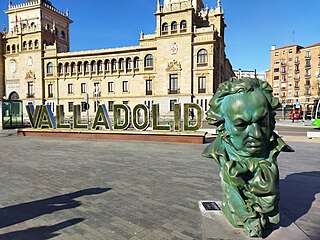
The 38th Goya Awards ceremony, presented by the Academy of Cinematographic Arts and Sciences of Spain, took place at the Feria de Valladolid premises in Valladolid, Castile and León on 10 February 2024. The ceremony was broadcast on La 1 and RTVE Play.

Christ embracing Saint Bernard is an oil on canvas painting by Spanish artist Francesc Ribalta, created between 1625 and 1627, now held in the Museo del Prado of Madrid. It has been described as "“one of the most famous examples of Spanish naturalism and one of the greatest expressions of contemporary mysticism".
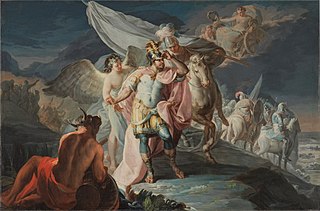
The Victorious Hannibal Seeing Italy from the Alps for the First Time, or Hannibal the victor crossing the Alps, or Hannibal the victorious from the heights of the Alps looks out over the plains of Italy is an oil painting by Spanish painter Francisco Goya, dating from his early years. It is the oldest documented work by the painter.

Self-portrait at 69 years is an oil painting by the Spanish painter Francisco Goya. Two original versions of this work have been preserved. One of the paintings, painted on canvas, is housed in the collections of the Prado Museum. The other, created on wood panel, is located in the Real Academia de Bellas Artes de San Fernando in Madrid. Both paintings were created in 1815, in the post-war period, and depict a very similar image of the artist. This is one of the most sincere and direct self-portraits of the painter.

A Village Bullfight or A Village Corrida is an oil painting by the Spanish painter Francisco Goya.

La novillada, is a painting by Francisco de Goya, painted in 1780, when he was trying his hand at bullfighting. It is part of the fourth series of tapestry cartoons for the Prince of Asturias' antechamber in the Pardo Palace.

















